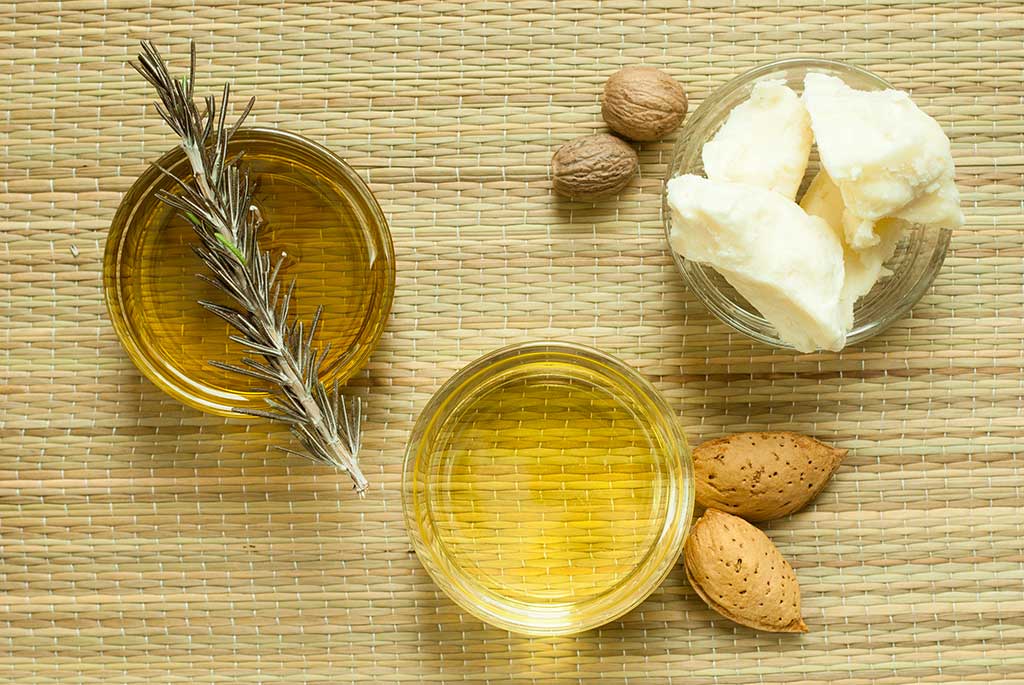
Where does shea butter come from?
Shea butter, botanically known as Butyrospermum Parkii, has its origin in Africa, precisely East and West Africa. As a rich source of Vitamin A, E, and F, Shea butter comes from the seed fat of the sacred Shea tree, also called the Karite tree. There are two oily kernels found within the Shea seed, which are grounded and boiled in water until shea butter forms and is scooped into a paste. At room temperature, the paste solidifies and is ready for use.
What type of shea butter should I use?
As a natural moisturizer, Shea butter is solid and thick when at room temperature. When exposed to heat or sun, Shea butter changes form. In marketing, numerous adjectives for shea butter are used; refined, raw, premium, unrefined, or even graded A, B, and C. Determining which shea butter is the best depends on purposes and usage. We recommend looking for 100% pure unrefined shea butter. When shea butter is unrefined and virgin, it is not stripped of it medicinal and healing properties. Refined shea butter, in the process of cleaning off the nutty smell, undergoes a process that removes the natural properties, leaving you with a bland butter that is not as effective.
How is shea butter used on skin?
For centuries, Africans have utilized shea butter in the treatment of myriads of skin conditions. Shea butter also works it magic on the hair, wound care, and it has been said to work for treating leprosy.
Shea butter provides many benefits to skin and is used to:
- Treat dry skin while protecting the skin’s natural oils
- Increase collagen production
- Minimize scars and inhibit keloid scar tissue
- Prevent stretch marks when used as a pregnancy salve
- Treat dry splitting nails and cracked cuticles
- Protect skin from sun damage
- Moisturize the hair and scalp
- Protect babies skin from wetness and diaper rash
Shea Butter Benefits
Shea butter is used for many purposes, including cooking, but its usage on the skin is more pronounced and widespread. Due to the healing and moisturizing properties of shea butter, it works for acne, burns, dry skin, inflamed skin, itch, insect bites, scabies, eczema, psoriasis, and rash. Other conditions that will benefit from Shea butter include; skin ulcers, sinus infections, wrinkled skin, stretch marks, spider veins, and wound treatment.
In recent years, Shea butter is being used in skin care products. It has become an essential ingredient in body lotions, body scrubs, body butters, hair creams, and baby care products for the following reasons:
- Presence of Anti-Aging Properties
Wrinkling is synonymous with aging. When there is a room for tissue regeneration, there is less room for wrinkling of the skin. With its ability to stimulate collagen production, shea butter increases the skin’s elasticity resulting in fewer fine lines and wrinkles, while the natural Vitamin A in shea butter reduces wrinkles. The American Journal of Life Sciences study on the Effects of Topical and Dietary Use of Shea Butter on Animals shows that shea butter actually slows the aging process.
- It is a Natural Moisturizer
Rather than relying on artificial and synthetic ingredients, skin care manufacturers are turning to shea butter as a primary ingredient for moisturizing skin. Shea butter has an ample concentration of natural vitamins and fatty acids which nourishes the skin. The stearic, oleic, linolenic and palmitic acids in shea butter ensure the skin does not go dry or become brittle.
- Protects the Skin Against Sunburn and Windburn
More than any other moisturizing agent, shea butter is highly emollient and works its way into the skin easily. It functions as sunscreen protection, preventing the skin from sunburn in a natural way while also decreasing inflammation in the skin. When used in skin care products such as body butters and lotions, shea butter locks in moisture to prevent windburn.
- Presence of Anti-Fungal and Anti-inflammatory Properties
The usefulness of shea butter is also evident in baby care products. Shea butter naturally fights off yeast growth in diapers when applied as diaper rash ointment. It aids the easy flow of blood and hastens cell regeneration in children and adults. Parents are relying on the organic nature of Shea butter in wading off the effects of dangerous chemicals children are exposed to from other products.
What Skin Types are Receptive to Shea Butter?
Individuals with dry skin have are not the only ones to find solace in the use of shea butter. Shea butter also has immense benefits for those with oily skin. Shea butter can help balance sebum secretion on the skin and get rid of any oily secretions, abiding by the theory of Like Attract Like. While this brings good news for those with oily skin, you should still avoid excessive use of shea butter on your oily skin as it will appear greasy.
What are the Side Effects of Shea Butter?
When used in the raw, unrefined and virgin form, Shea butter does not have any known side effect on the human body. If you are choosing products that use refined shea butter, take the time to review how the shea butter was refined. In some instances chemicals that are toxic to the human skin are used to extract nutty smells. Our suggestion is to stick with products that use raw, unrefined virgin shea butter.
Final Words and Tips
The benefits of shea butter to the human body is innumerable. To get the most out of your shea butter products, always keep it away from heat and direct light.


1 comment
Thank you for this info😊